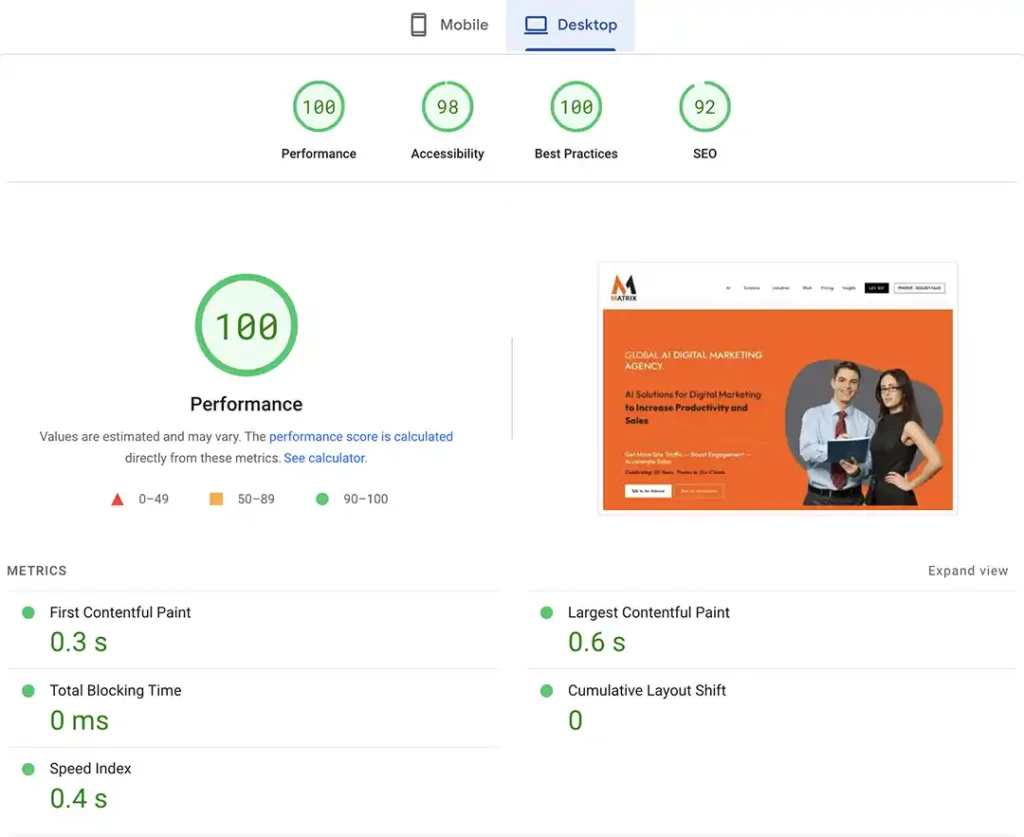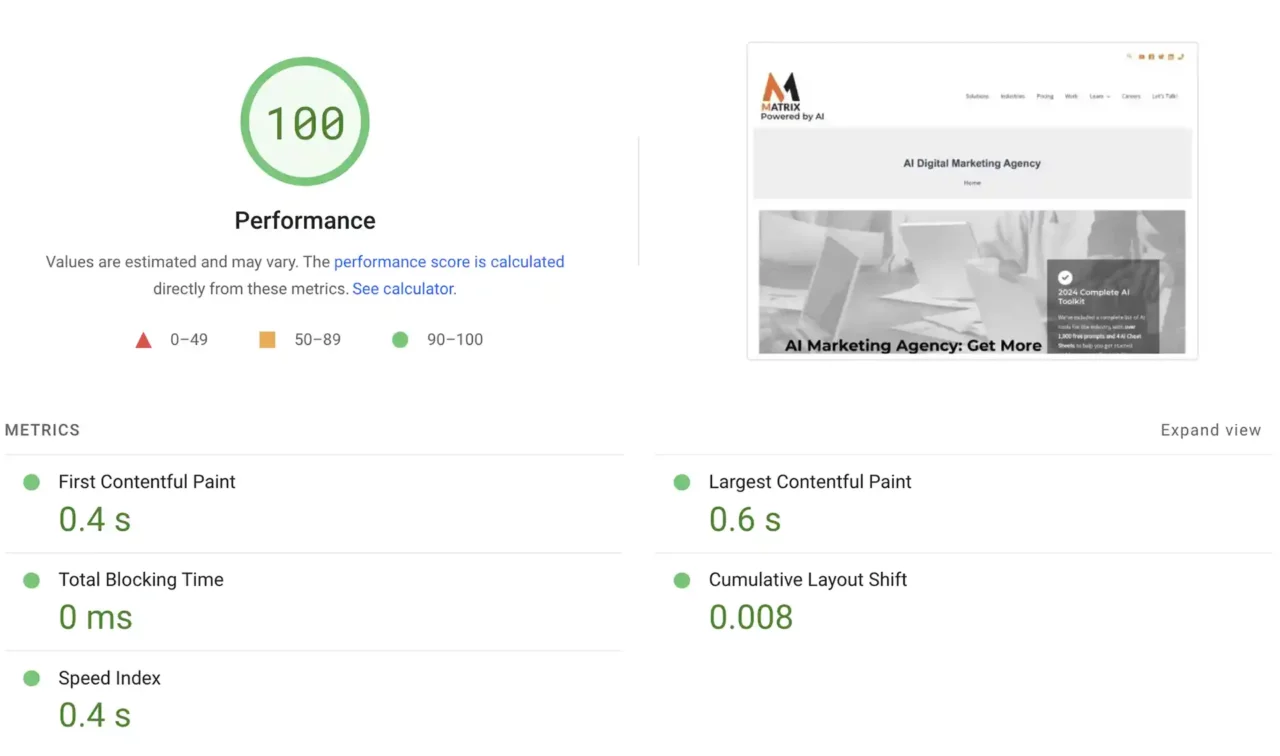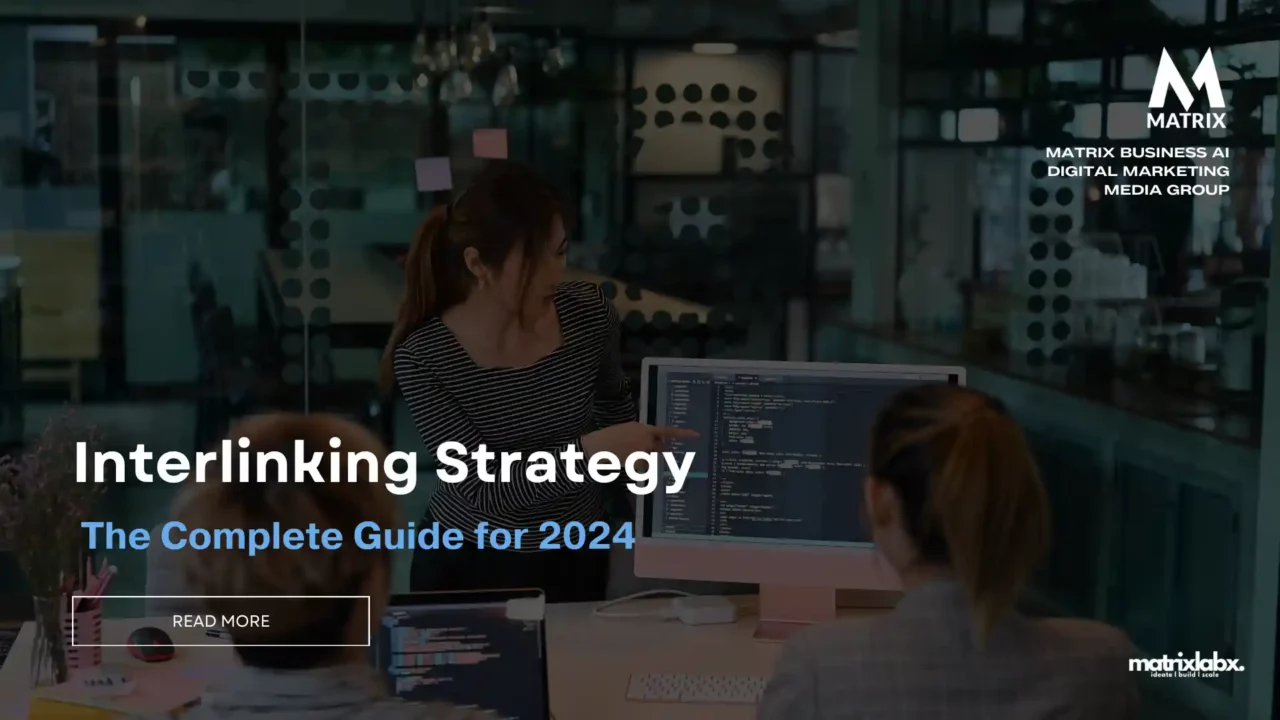Interlinking Strategy: The Complete Guide for 2024
The Complete Guide for 2024 for Better Interlinking Strategy
Interlinking has become vital to search engine optimization (SEO) in today’s digital landscape. By strategically connecting relevant pages within a website, interlinking enhances user experience and helps search engines understand the website’s structure and content hierarchy.
This comprehensive guide will walk you through the art of interlinking, offering insights and strategies to optimize your website’s internal linking structure in 2024. We will cover everything from understanding the importance of interlinking to implementing effective techniques.
1. The Significance of Interlinking
Interlinking is crucial in SEO by establishing contextual relationships between different website pages. You can guide users and search engines to essential content within your site by using hyperlinks. This improves navigability and helps search engines crawl and index pages more efficiently.
A well-planned interlinking strategy can also boost the authority and ranking potential of specific pages, as the flow of link equity is distributed throughout the website. It can also increase the visibility of older, less frequently accessed pages, ensuring valuable content is noticed in the depths of your website.
2. Planning Your Interlinking Strategy
Before diving into interlinking, it’s crucial to have a solid plan in place. Start by auditing your existing content and identifying key pages that should be prioritized for interlinking. Consider each page’s relevance, search traffic potential, and conversion opportunities.
Next, create a content hierarchy by categorizing your pages based on topic or relevancy. This will help you organize your interlinking efforts and establish a logical flow throughout your website.
3. Utilizing Anchor Text
Anchor text refers to the clickable text within a hyperlink. The choice of anchor text plays a vital role in communicating to both users and search engines what the linked page is about. When implementing your interlinking strategy, consider the following factors:
– Relevance: The anchor text should accurately describe the linked page’s content using relevant keywords.
– Variation: Use a combination of exact match, partial match, and branded anchor text to maintain a natural link profile.
– Avoid over-optimization: Ensure the anchor text does not appear spammy or manipulative.
4. Contextual and Natural Link Placement

When placing interlinks, it’s essential to maintain a contextual and natural approach. Linking from relevant anchor text within the content body is generally more effective than using generic phrases like “click here” or “read more.” By doing so, you provide additional value to users and increase the chances of engagement and conversions.
Additionally, diversify the placement of your interlinks throughout the page. While it’s common practice to include interlinks towards the beginning or end of an article, consider sprinkling them strategically within the content to maximize their impact.

5. Balancing Internal and External Links
While internal links are the primary focus of interlinking, it is essential to balance internal and external links. External links to reliable sources can enhance your website’s credibility and authority, signaling that you are providing valuable information to search engines.
When interlinking, be cautious and do it sparingly. Too many internal links on a page can confuse users and dilute the authority you are trying to pass. Focus on quality over quantity and ensure each interlink adds value to the user’s journey.
6. Utilizing Sitemaps and Navigation Menus
In addition to contextual interlinking, incorporating sitemaps and navigation menus can further enhance your website’s internal linking structure. A well-organized sitemap provides a bird’s-eye view of your website’s structure, making navigating easier for users and search engines.
Similarly, navigation menus help users quickly find your website’s most important pages. When designing your navigation, prioritize key pages and ensure they are easily accessible from anywhere within your website.
7. Monitoring and Updating Your Interlinking Strategy
While creating your interlinking strategy is crucial, monitoring its performance and making necessary adjustments over time is equally important. Keep an eye on your website’s analytics to identify pages that receive significant traffic from interlinks and may need additional internal linking support.
Regularly update your interlinking strategy as you create new content or modify existing pages. As your website evolves, refine your interlinking plan to ensure it remains impactful and aligned with your SEO goals.
8. Leveraging Technology for Interlinking
As technology advances, new tools and plugins have emerged to simplify the process of interlinking. From automated internal linking suggestions to visual site mapping tools, these resources can assist in streamlining your interlinking strategy.
Keep an eye out for innovative SEO plugins and software that can help you discover interlinking opportunities, optimize anchor text, and track the performance of your internal links. However, manual review and customization often lead to the most effective interlinking strategy.
The 2024 Complete Guide Interlinking Strategy
The interlinking strategy creates links between pages on your website. It’s an important part of SEO because it helps to improve your website’s structure and navigation, and it can also help to boost your rankings in search results.
In this guide, we’ll cover everything you need to know about interlinking strategy, including:
- What is interlinking, and why is it important?
- Different types of interlinks
- Best practices for interlinking
- How to use interlinking to improve your SEO
What is interlinking, and why is it important?
Interlinking is the process of creating links between pages on your website. It’s an important part of SEO because it helps to
- Improve your website’s structure and navigation: Interlinks can help visitors easily find the information they’re looking for on your website. They can also help search engines to understand your website’s structure and content.
- Boost your rankings in search results: Google uses interlinks to signal relevance and authority. When you interlink between pages on your website, you tell Google that these pages are related and contain valuable information.
Different types of interlinks
There are two main types of interlinks:
- Internal links: These are links between pages on the same website.
- External links: These are links from other websites to your website.
Internal links are the most important type of interlink for SEO. However, external links can also be helpful, especially from high-quality websites.
Best practices for interlinking
Here are some best practices for interlinking:
- Use relevant anchor text: The anchor text is the text that is visible and clickable when you link to another page. It should be relevant to the page you’re linking to.
- Link to high-quality pages: Only link to pages on your website that are high-quality and informative.
- Avoid keyword stuffing: Don’t overuse keywords in your anchor text. This can be seen as spammy by Google.
- Use various link types: There are different links, such as text links, image links, and button links. Use a variety of link types to make your interlinking more natural.
How to use interlinking to improve your SEO
Here are some tips for using interlinking to improve your SEO:
- Create a content hierarchy: Organize your website’s content into a hierarchy, with pillar pages at the top and cluster content below. Then, interlink between the pillar pages and cluster content.
- Use interlinks to guide users through your website: Use interlinks to guide users to the pages on your website that they’re most likely to be interested in. For example, you could link from a blog post to a product page or from a pillar page to a related cluster content page.
- Use interlinks to boost the authority of your pillar pages: Link to your pillar pages from other pages on your website. This will help boost their authority in Google’s eyes.
What are an interlinking strategy and cluster content?
An interlinking strategy is a plan for how to link between pages on your website. It’s an important part of SEO because it helps to improve your website’s structure and navigation, and it can also help to boost your rankings in search results.
When you interlink between pages on your website, you tell Google that these pages are related and contain valuable information. This helps Google better understand your website’s content and rank it higher in search results for relevant keywords. Web pages are internal links and require the best internal linking best practices.
What is cluster content?
Cluster content is a group of related pages on your website covering the same topic. The pages in a cluster content group should be linked internally and externally to show search engines that they are all part of the same topic.
Cluster content is a marketing strategy that organizes website content around specific topics or themes. This approach helps to create a more cohesive and informative user experience, and it can also improve your website’s search engine ranking.
How does cluster content work?
Cluster content typically consists of three main components:
- Pillar page: A comprehensive overview of a specific topic.
- Cluster content: Supporting content that provides more detail on specific aspects of the topic.
- Internal linking: Links between the pillar page and the cluster content and between the pieces of cluster content themselves.
Benefits of cluster content
There are many benefits to using cluster content, including:
- Improved user experience: Cluster content makes it easier for users to find the information they are looking for, and it can also help them to understand a topic more deeply.
- Increased organic traffic: Creating high-quality content relevant to your target audience can improve your website’s ranking in search engine results pages (SERPs). This can lead to increased traffic from organic search.
- More engaged audience: Cluster content can help to keep your audience engaged by providing them with a variety of content on a topic they are interested in.
How to create cluster content
To create cluster content, follow these steps:
- Choose a topic: Select a topic relevant to your target audience and that you have expertise in.
- Create a pillar page: Write a comprehensive overview of the topic. This page should be longer than your cluster content pages and include a table of contents to help users find the information they seek.
- Create cluster content: Write a series of supporting content pages that provide more detail on specific aspects of the topic. Each page should be focused on a single keyword or phrase.
- Link your content: Link the pillar page to the cluster content pages, and link the cluster content pages to each other. This will help users navigate between your content and find the information they seek.
Cluster content examples
Here are some examples of cluster content:
- Topic: Digital marketing
- Pillar page: “What is digital marketing?”
- Cluster content:
- “SEO: The ultimate guide.”
- “Content marketing: How to create content that your audience loves.”
- “Social media marketing: The best strategies for your business.”
- “Email marketing: How to build an email list and send effective campaigns.”
- Topic: Website design
- Pillar page: “The ultimate guide to website design.”
- Cluster content:
- “How to choose a website design company.”
- “The elements of a successful website design”
- “How to write effective website copy.”
- “Website usability: Tips for creating a user-friendly website.”
Cluster content is a powerful tool that can help you improve your website’s user experience, increase your organic traffic, and engage your audience. If you’re not already using cluster content, I encourage you to try it.
Cluster content aims to create a hub of high-quality information on a specific topic. This can attract visitors to your website and improve your chances of ranking high in search results for that topic.
Examples of cluster content pages

How to use interlinking to improve your homepage
Your homepage is the most important page on your website, so it’s important to ensure it’s well-optimized for SEO. Interlinking is a great way to do this, as it can help to improve your homepage’s structure, navigation, and authority.
Here are some tips on how to use interlinking to improve your homepage:
- Link to your most important pages: Your homepage should be a jumping-off point for visitors to explore the rest of your website. Ensure to link to your most important pages, such as your product pages, category pages, and blog posts.
- Use relevant anchor text: The anchor text is the text that is visible and clickable when you link to another page. Use relevant anchor text that accurately describes the page you’re linking to.
- Link to your pillar pages: Pillar pages are the most important pages on your website and cover the main topics you write about. Make sure to link to your pillar pages from your homepage. This will help to boost their authority in the eyes of Google.
- Use interlinking to create a logical flow: Use interlinking to create a logical flow for visitors to follow on your homepage. For example, you could link from a section about your products to a section about your services.
- Use interlinking: Too much interlinking can be seen as spammy by Google. Aim to link to each page on your homepage at most 3-5 times.
Here are some specific examples of how you can use interlinking to improve your homepage:
- Link from your hero section to your most popular products: It is often the first thing visitors see when they land on your homepage, so it’s a great place to link to your most popular products.
- Link from your value proposition to your pillar pages: Your value proposition is a short statement that explains what makes your business unique and why customers should choose you. Link your value proposition to your pillar pages to provide visitors with more information about your products and services.
- Link from your call to action to your landing pages: Your call to action is a button or text link that tells visitors what you want them to do next. For example, you might have a call to action that says “Shop Now” or “Learn More.” Link your call to action to your landing pages to give visitors a clear path to follow.
By following these tips, you can use interlinking to improve your homepage’s SEO and make it easier for visitors to find the information they want.
How to use interlinking to improve your blog posts

Interlinking is connecting two or more pages on your website with hyperlinks. It is an important part of SEO because it helps search engines understand the structure and hierarchy of your website, as well as the relationship between different pages. Interlinking can also improve the user experience by making it easier for visitors to navigate your website and find the information they seek.
There are several ways to use interlinking to improve your blog posts. Here are a few tips:
- Link to related blog posts. When you write a new blog post, take some time to identify other relevant posts on your website that you can link to. This will keep readers engaged on your website and encourage them to explore more of your content.
- Link to pillar pages. Pillar pages are the most important pages on your website. They cover the core topics of your website and provide in-depth information on those topics. Linking to pillar pages from your blog posts will help boost their authority and ranking in search results.
- Use relevant anchor text. The anchor text is the text that is displayed when you create a hyperlink. It is important to use relevant anchor text that accurately describes the page you are linking to. This will help search engines understand the link’s context and improve your blog post’s relevance.
- Avoid keyword stuffing. Keyword stuffing is the practice of overusing keywords in your anchor text. This can be seen as spammy by search engines and can penalize your website. Internal linking strategies for SEO need to be aligned with the internal linking strategy.
Here is an example of how to use interlinking in a blog post:
Blog post title: How to Choose the Right Shoes for Running
Blog post introduction:
Choosing the right shoes for running is important to avoid injuries and improve your performance. There are many factors to consider when choosing running shoes, such as your foot type, running style, and budget.
Body:
In the body of the blog post, you could link to other relevant blog posts on your website, such as
- How to Determine Your Foot Type
- Different Types of Running Shoes
- How to Find the Best Running Shoes for Your Budget
You could also link to pillar pages on your website, such as:
- Running Shoes
- Running Gear
- Running Tips
By using interlinking in your blog posts, you can improve their SEO, keep readers engaged, and make it easier for them to find the information they are looking for.
Here are some additional tips for using interlinking in your blog posts:
- Use various link types, such as text, image, and button links.
- Link to both old and new blog posts. This will help to keep all of your content relevant and up-to-date.
- Use a plugin to help you manage your interlinking. Several plugins available for WordPress and other blogging platforms can make it easy to add and manage links in your posts.
By following these tips, you can use interlinking to improve your blog posts and boost your SEO.
How to use interlinking to improve your product pages
Best Practices for Interlinking Product Pages
Strategic Anchor Text Selection:
The anchor text – the clickable word or phrase – should be judiciously chosen. It needs to be contextually relevant and provide a hint about the target page’s content. For instance, instead of generic terms like “click here,” use descriptive phrases such as “vintage leather boots” or “handcrafted wooden desk.”
Relevance and Context Matters:
One cardinal rule in interlinking is ensuring the linked pages are relevant to each other. For a product page showcasing a designer dress, it’s prudent to link to accessories or shoes that complement the attire rather than a completely unrelated product like kitchenware.
How to use interlinking to improve your category pages
Interlinking Strategies for Category Pages
The Art of Hierarchical Linking:
A website is akin to a structured pyramid. At the base, you have individual product or content pages, and as you move up, you find category and sub-category pages, culminating at the apex with the homepage.
Hierarchical linking ensures a seamless flow of link equity from the top down, with category pages as vital conduits. This not only aids in SEO but also ensures users can effortlessly navigate between different levels of the site.
Contextual Interlinking for Enhanced User Experience:
While hierarchical linking focuses on structure, contextual interlinking emphasizes relevance. Interlinking to related sub-categories or pertinent articles within category pages can enhance the user’s journey.
For instance, a category page dedicated to “winter wear” could interlink to sub-categories like “thermal wear” or “winter accessories,” offering users a comprehensive browsing experience.
How to use interlinking to improve your landing pages:
Grasping the Essence of Landing Pages
Defining Landing Pages:
Landing pages are specialized web pages meticulously crafted to achieve a singular objective, capturing leads, facilitating product sales, or promoting a specific campaign.
Unlike standard web pages that provide general information and encourage browsing, landing pages are laser-focused on conversion.
The Integral Role of Landing Pages in Marketing Campaigns:
Any seasoned marketer will attest to the indispensable nature of landing pages. They serve as the linchpin in most digital marketing campaigns.
Whether a user clicks on a pay-per-click ad, a social media promotion, or an email link, they’re often directed to a landing page. Here, through compelling content and design, users are nudged towards taking a specific action, making these pages critical for achieving desirable conversion rates.
Effective Interlinking Techniques for Landing Pages
The Principle of Thematic Relevance:
While landing pages aim to limit distractions and focus on conversion, strategic interlinking can enhance their efficacy. The golden rule is thematic relevance.
For instance, a landing page promoting a fitness webinar can benefit from interlinks to related articles or products, like fitness gear or nutrition supplements, thus providing users with a holistic experience.
Utilizing Anchor Text Strategically:
Anchor texts, the clickable words in hyperlinks, must be chosen precisely. They should resonate with the content they link to and pique user interest. Instead of generic phrases like “learn more,” opt for descriptive and enticing terms like “discover groundbreaking fitness techniques.”
Ensuring Smooth User Navigation Through Interlinks:
Interlinking should augment, not hinder, the user journey. Ensuring that interlinks open in new tabs is crucial and preserving the landing page for users to return to.
Moreover, the linked content should be high quality, ensuring users feel the interlink adds value to their experience.
Regular Monitoring and Maintenance of Interlinked Content:
The world of digital content is in perpetual flux. A link that’s relevant today might become obsolete tomorrow.
Regular audits using tools like LinkMiner or Dead Link Checker can help identify and rectify broken or outdated links, ensuring the interlinking structure remains robust and beneficial.
Interlinking strategy is an important part of SEO. By interlinking between pages on your website, you can improve your website’s structure and navigation, boost your rankings in search results, and guide users to the information they’re most likely to be interested in.

Better Search Ranking
Better Search Ranking in 90 days
SEO is extremely important for companies to rank well in search engines because it is the primary way that people find information online.
Final Thoughts
Maintaining Link Equity and Balance:
It’s imperative to strike a balance when interlinking. More than doing it can dilute link equity, while being too sparse can leave users stranded.
The key is to ensure that interlinks are both meaningful and offer value. Every link should have a purpose, guiding users to a relevant page or enhancing the site’s SEO strategy.
Periodic Audits for Interlinking Health:
The digital realm is ever-evolving. Products get added, content gets updated, and sometimes, links break. Periodic audits are essential to ensure the interlinking on category pages remains robust.
Utilizing tools like Moz or SEMrush can identify broken links, redirect loops, or any other anomalies that might hinder the efficacy of interlinking. Or use the AI prompt in BARD or ChatGTP4+.
Interlinking is a dynamic and ever-evolving component of SEO. By following this complete guide in 2024, you’ll have a solid foundation for implementing an effective interlinking strategy that improves user experience, boosts your website’s authority, and enhances search engine visibility.
Remember, a successful interlinking strategy requires careful planning, continuous monitoring, and a user-centric mindset.
By providing valuable and contextually relevant interlinks, you can create a seamless website experience while impressing users and search engines alike.
So, invest the time and effort to craft an interlinking strategy that aligns with your goals and watch your website soar to new heights in 2024 and beyond.


